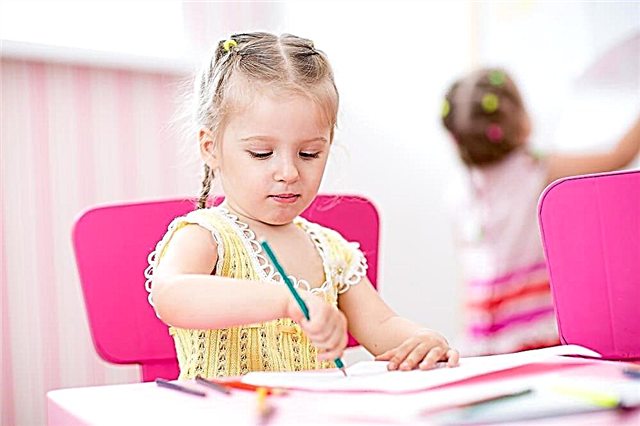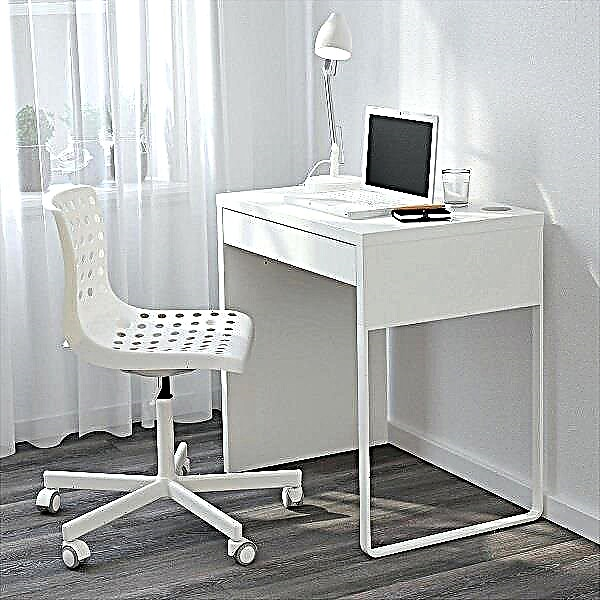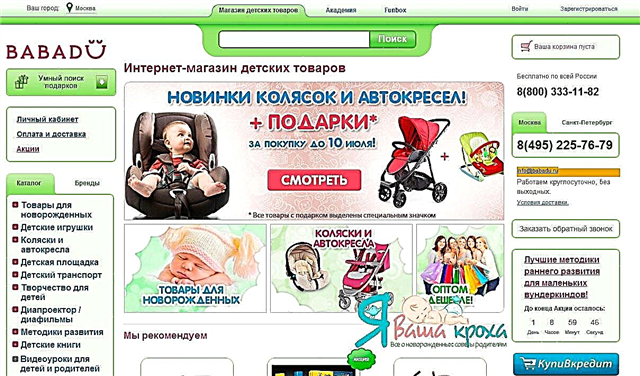
Seizures of various origins in children occur six times more often than in adults. They can be the result of dehydration, imbalance in fluid and minerals, critical deficiency of potassium and magnesium, hypothermia, poisoning, intoxication, epilepsy, pinched nerve in the canal, and so on. Seizures require immediate intervention, especially if they occur in babies in the first two years of life, because if the spasms are not eliminated in time, it is fraught with serious damage to the baby's central nervous system, cerebral edema. Anticonvulsants come to the rescue.

Anticonvulsants for children are prescribed in combination with other medications (anti-inflammatory, analgesics, antiviral, sedatives) after identifying the cause of the seizures.
To do this, the doctor will carefully study the full picture of the disease, take into account at what time of day seizures most often occur with the child, how often they occur, what provokes them. Treatment usually takes place in a hospital under the constant supervision of doctors.
Therapy with anticonvulsant drugs will also require a lot of additional studies - ECG, MRI, etc.

How do they work?
Anticonvulsants act on the central nervous system, suppressing it, due to this it is possible to stop convulsive spasms. However, some representatives of anticonvulsants have an additional effect - they depress the respiratory center, and this can be very dangerous for children, especially small ones. Barbiturates, magnesium sulfate are considered such respiratory depressants for seizures.
Benzodiazepines, droperidol with fentanyl, lidocaine are considered to be drugs that slightly affect the child's breathing.
With the help of relatively sparing benzodiazepines ("Sibazon", "Seduxen"), you can cope with convulsions of any origin. They prevent the propagation of nerve impulses in the brain and spinal cord.
Droperidol with fentanyl is often used to treat children.
Lidocaine, when administered quickly intravenously, stops any seizures, acting at the cellular level - ions begin to more easily penetrate the cell membrane.

Among the barbiturates, the most famous are Phenobarbital and Hexenal. "Phenobarbital" acts for a long time, but the effect of its reception is not achieved immediately, and when arresting seizures, it is time that sometimes plays a decisive role. Moreover, with age, the effect of the drug is achieved faster. In babies under one year old, it occurs only 5 hours after ingestion, and in children over two years old, “Phenobarbital” is absorbed from the gastrointestinal tract twice as fast.
They try not to prescribe "Hexenal" to children, as it has a very strong effect on the respiratory system, suppressing it like drugs for anesthesia.
Magnesium sulfate in pediatrics is also rarely used, mainly in the elimination of seizures associated with cerebral edema, magnesium imbalance.
The most important factor in treating seizures in children is determining the optimal dose of the drug. It is calculated strictly individually; specialists try to start treatment with small doses, gradually increasing them as needed.
The most difficult question to answer is how long the course of treatment with anticonvulsants takes. There is no single standard, since the child needs to take them either until he fully recovers, or all his life, if seizures are associated with severe hereditary pathologies.

Classification
According to the method of exposure and the active substance, all anticonvulsants are divided into several groups:
- Iminostilbenes. Anticonvulsants with excellent analgesic and antidepressant effects. Improve mood, eliminate muscle spasms.
- Valproate Anticonvulsants, which have the ability to relax muscles while providing sedation. They also improve mood and normalize the patient's psychological state.
- Barbiturates. They perfectly relieve seizures, while lowering blood pressure and have a rather pronounced hypnotic effect.
- Succinides. These are anticonvulsants that are indispensable in cases when it is tedious to eliminate spasms in certain organs, with neuralgia.
- Benzodiazepines. With the help of these medications, prolonged convulsive seizures are suppressed, drugs are prescribed for epilepsy.
Anti-seizure drugs for children must meet several important criteria. They should not have an overwhelming effect on the psyche, should not cause addiction and dependence, while medications must be hypoallergenic.
Parents have no moral or legal right to choose such serious drugs for their children on their own. All anticonvulsants in Russian pharmacies are sold only upon presentation of a prescription, which is prescribed by a doctor after establishing the causes of convulsive conditions.

List of anticonvulsant medications for children
"Carbamazepine"... This antiepileptic agent from the category of iminostbens has many advantages. It reduces pain in those with neuralgia. Reduces the frequency of seizures in epilepsy, after several days of taking the drug, there is a decrease in anxiety, a decrease in aggressiveness in adolescents and children. The medicine is absorbed rather slowly, but it acts fully and for a long time. The tool is available in tablets. "Carbamazepine" is prescribed for children from 3 years old.

"Zeptol"... An antiepileptic drug such as iminostilbens improves mood by suppressing the production of norepinephrine and dopamine, relieves pain. The drug is prescribed for epilepsy, trigeminal neuralgia. The drug is produced in the form of tablets. Children can be given medicine from the age of three.

"Valparin"... An anticonvulsant drug of the vaoproate group. The product does not inhibit breathing, does not affect blood pressure, and has a moderate sedative effect. Valparin is prescribed for the treatment of epilepsy, for seizures associated with organic lesions of the brain, for febrile seizures (seizures at high temperatures in children from birth to 6 years).
The drug is not recommended for children under the age of three. For children, it is prescribed in tablets, and for babies whose body weight is less than 20 kilograms, in intravenous injections or droppers.

"Apilepsin"... This anticonvulsant drug is prescribed not only for the treatment of epilepsy, but also for childhood tics, as well as for febrile seizures in babies. The medicine is available in the form of drops for oral administration, tablets, dry matter for intravenous injections and droppers, and also in the form of a syrup. Children under 3 years old can take the medication in syrup. From 3 years of age, other forms of the drug are allowed.
"Konvulex"... The anticonvulsant drug of the vaoproate group has a mild sedative effect and the ability to relax muscles. The drug allows you to cope with a wide range of seizures of various origins from epileptic to febrile. In addition, "Konvulex" is prescribed for children with bipolar disorders. The forms of release are different - from dry matter for subsequent preparation of injections to capsules and tablets. The so-called "children's" forms of the medicine are oral drops and syrup. Capsules and tablets are contraindicated in children under 3 years of age. They can only be given liquid forms of "Konvulex".


"Phenobarbital"... This anticonvulsant belongs to the category of barbiturates. It depresses some areas of the cerebral cortex, including the respiratory center. Has a hypnotic effect. The drug will be prescribed for a child in the treatment of epilepsy, severe sleep disorders, with spastic paralysis, with a number of seizures not associated with manifestations of epilepsy. Available in tablets. Can be assigned to children from birth.

Clonazepam... The brightest representative of the benzodiazepine group. Approved for use in children of any age with epilepsy, nodding convulsions, atonic seizures. Available in tablets and in solution for intravenous administration.

"Sibazon" - a tranquilizer with an anticonvulsant effect. May lower blood pressure. It is used for muscle cramps of various origins. Available in tablets and solution for intravenous injection. It is used to relieve epileptic seizures and febrile seizures in children from one year of age.

In addition, Antilepsin, Iktoril, Rivotril, Pufemid, Ronton, Etimal and Sereisky's Mixture are effective against children's seizures.
What cannot be done?
If your child has seizures, do not try to figure out the cause of the seizures yourself. Call an ambulance, and while you are waiting for doctors, carefully observe the baby - what kind of convulsions he has, how great is the pain syndrome, pay attention to the duration of the convulsive spasms. All this information will be useful later for specialists to establish the correct diagnosis.
Do not give your child any anticonvulsants on your own. Also, do not give your baby food or water, because particles can enter the respiratory tract and cause suffocation.
Do not try to get your child's tongue. This is a common misconception. The kid will not swallow the tongue, but it is possible to suffocate from the fact that fragments of teeth injured when trying to open his jaw get into his respiratory tract.
Do not hold the child in a convulsive state in one fixed position. This can cause serious joint injuries, sprains, and muscle tears.
The well-known pediatrician Komarovsky tells in detail about convulsions:
Tips for parents from the doctor of the Union of Pediatricians of Russia:



